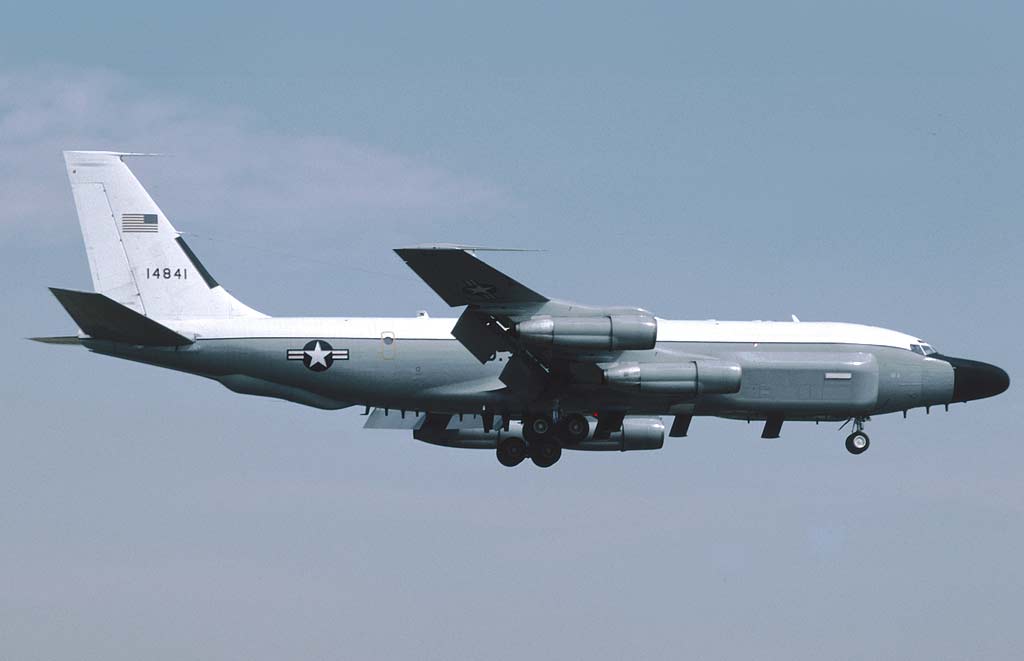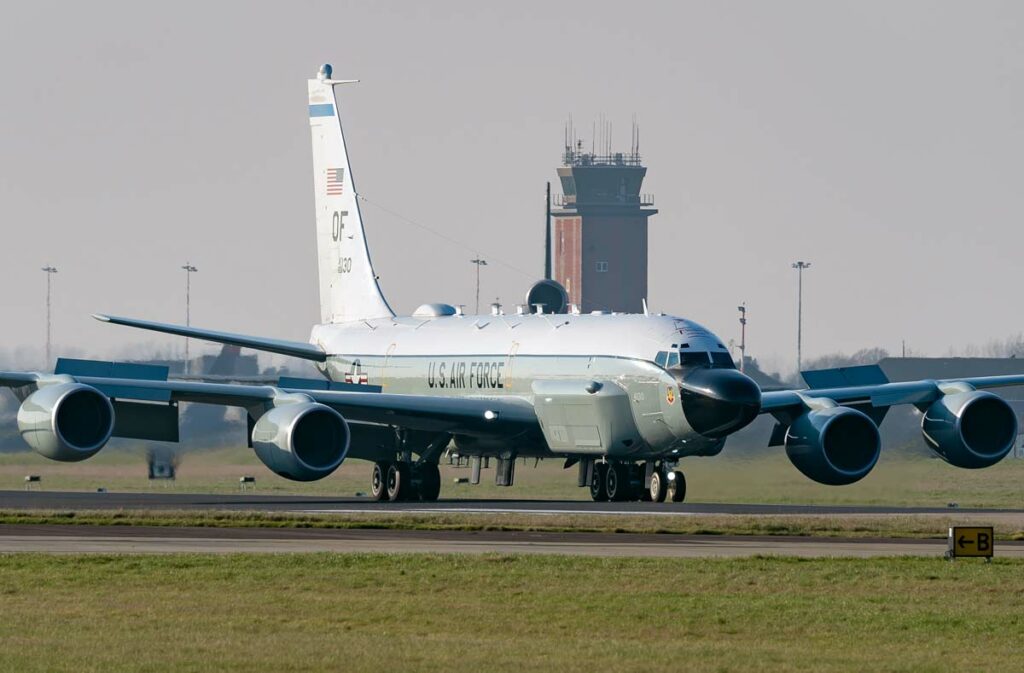The Boeing RC-135 is a mainstay of US airborne reconnaissance, adapted for SIGINT, ELINT, and COMINT missions globally.
In Brief
The Boeing RC-135 is a family of large reconnaissance aircraft used by the United States Air Force, derived from the C-135 Stratolifter. Adapted for a variety of signals intelligence (SIGINT), electronic intelligence (ELINT), and communications intelligence (COMINT) missions, the RC-135 series has played a crucial role in national security and global surveillance efforts since its introduction in the 1960s. These aircraft are equipped with state-of-the-art sensors, antennas, and electronic systems designed to intercept, analyze, and exploit electronic emissions from adversaries. The RC-135 typically operates at high altitudes, offering long endurance and a wide coverage area for its intelligence-gathering sensors. Its crew can consist of up to 30 personnel, depending on the mission specifics, including pilots, navigators, systems operators, and analysts, all working in concert to process and relay critical information in real-time.

History of the Development of the Boeing RC-135:
In the early 1960s, as the Cold War intensified, the United States identified an urgent need for an advanced airborne reconnaissance platform capable of monitoring Soviet military activities and electronic communications. The Boeing Company, leveraging the airframe of the KC-135 Stratotanker, initiated the development of the RC-135 to fulfill this requirement. The objective was to create a versatile, high-endurance aircraft that could gather SIGINT, ELINT, and COMINT across vast areas, penetrating the Iron Curtain without crossing borders.
The RC-135 program officially launched with the United States Air Force commissioning the adaptation of existing C-135 variants into specialized reconnaissance platforms. The first RC-135 made its maiden flight in August 1961, marking the beginning of a long and evolving service life. Although the RC-135 does not have a specific NATO nickname, its variants, such as the Rivet Joint, Cobra Ball, and Combat Sent, are well-known within defense and intelligence circles for their specialized capabilities.
Design of the Boeing RC-135:
The Boeing RC-135’s design is characterized by its adaptation to accommodate a wide range of reconnaissance missions. The aircraft’s airframe, based on the Boeing 707, has been modified over the years to support the mounting of various antennas, sensor packages, and electronic suites necessary for its intelligence-gathering roles.
The RC-135’s design facilitates modifications and upgrades, allowing for the integration of the latest technology in electronic warfare and surveillance. This adaptability ensures the aircraft remains effective in the face of evolving threats and technological advancements. The interior layout is configured to support the extensive crew required for operations, including pilot stations, multiple electronic operator stations, and analysis areas, all linked through an onboard data processing system.
One design challenge has been managing the heat generated by the extensive electronic equipment onboard, requiring sophisticated cooling systems to maintain optimal operation of sensors and systems. The aircraft’s performance and capability have been incrementally enhanced, particularly with the upgrade to more efficient and powerful engines, improving range, speed, and fuel efficiency.
Performance of the Boeing RC-135:
Equipped with CFM International F108-CF-201 turbofan engines, each providing up to 22,000 pounds of thrust, the RC-135 offers significant improvements in performance over its predecessors. It can reach speeds up to 500 mph (Mach 0.66) and operates at altitudes above 30,000 feet, with a maximum takeoff weight of about 297,000 pounds. The aircraft’s range exceeds 3,000 nautical miles, but with aerial refueling, it can be extended indefinitely, allowing for prolonged missions over strategic areas.
Compared to other reconnaissance platforms, the RC-135’s combination of range, endurance, and onboard capabilities make it uniquely effective. Its ability to gather comprehensive electronic intelligence from a safe distance beyond enemy lines, without direct engagement, provides a strategic advantage, making it an invaluable asset in the collection of real-time battlefield intelligence.
Variants of the Boeing RC-135:
The RC-135 family includes several specialized variants tailored to specific intelligence missions. The RC-135V/W Rivet Joint focuses on SIGINT and electronic order of battle gathering. The RC-135U Combat Sent is equipped for technical intelligence in support of theater commanders. The RC-135S Cobra Ball is designed for ballistic missile tracking. Each variant has unique modifications and sensor suites optimized for its role, demonstrating the platform’s versatility and adaptability to changing mission requirements.

Military Use and Combat of the Boeing RC-135:
The RC-135 has been extensively used in various conflicts and strategic hotspots around the world, from monitoring Soviet activities during the Cold War to providing real-time intelligence in the Middle East and Asia. Its missions have included overflight and standoff reconnaissance, electronic eavesdropping, and direct support to military operations. The aircraft’s ability to adapt to new threats and incorporate cutting-edge technology has kept it relevant in a rapidly changing strategic environment.
Despite facing competition from satellites and unmanned aerial vehicles (UAVs), the RC-135’s ability to provide real-time, actionable intelligence has ensured its continued use. Its presence in international airspace often serves as a strategic signal to both allies and adversaries of the United States’ surveillance capabilities.
The Boeing RC-135 remains a cornerstone of U.S. airborne reconnaissance efforts, embodying over half a century of technological evolution and operational experience. Its adaptability, performance, and unmatched capability in electronic intelligence gathering ensure that it continues to be a vital asset in national defense and global security operations. As threats evolve, so too will the RC-135, maintaining its role at the forefront of strategic reconnaissance.
Back to the Special Aircraft section